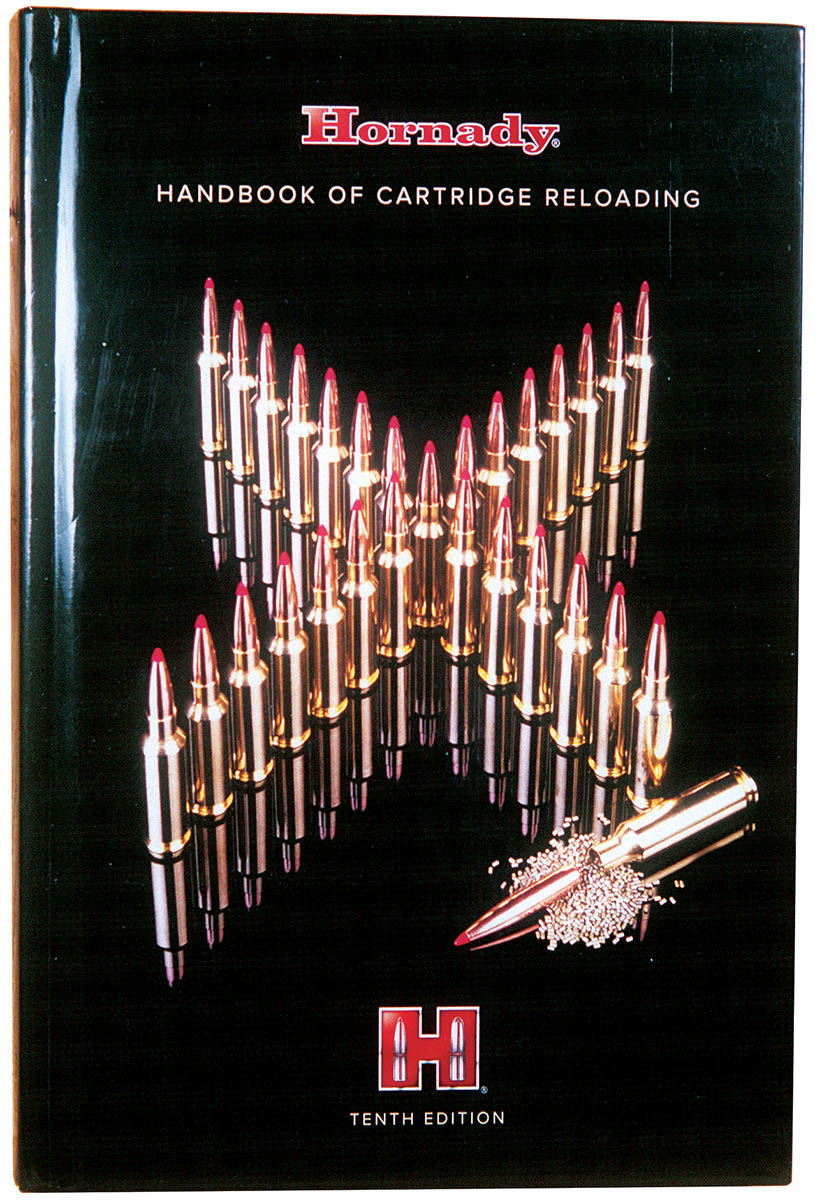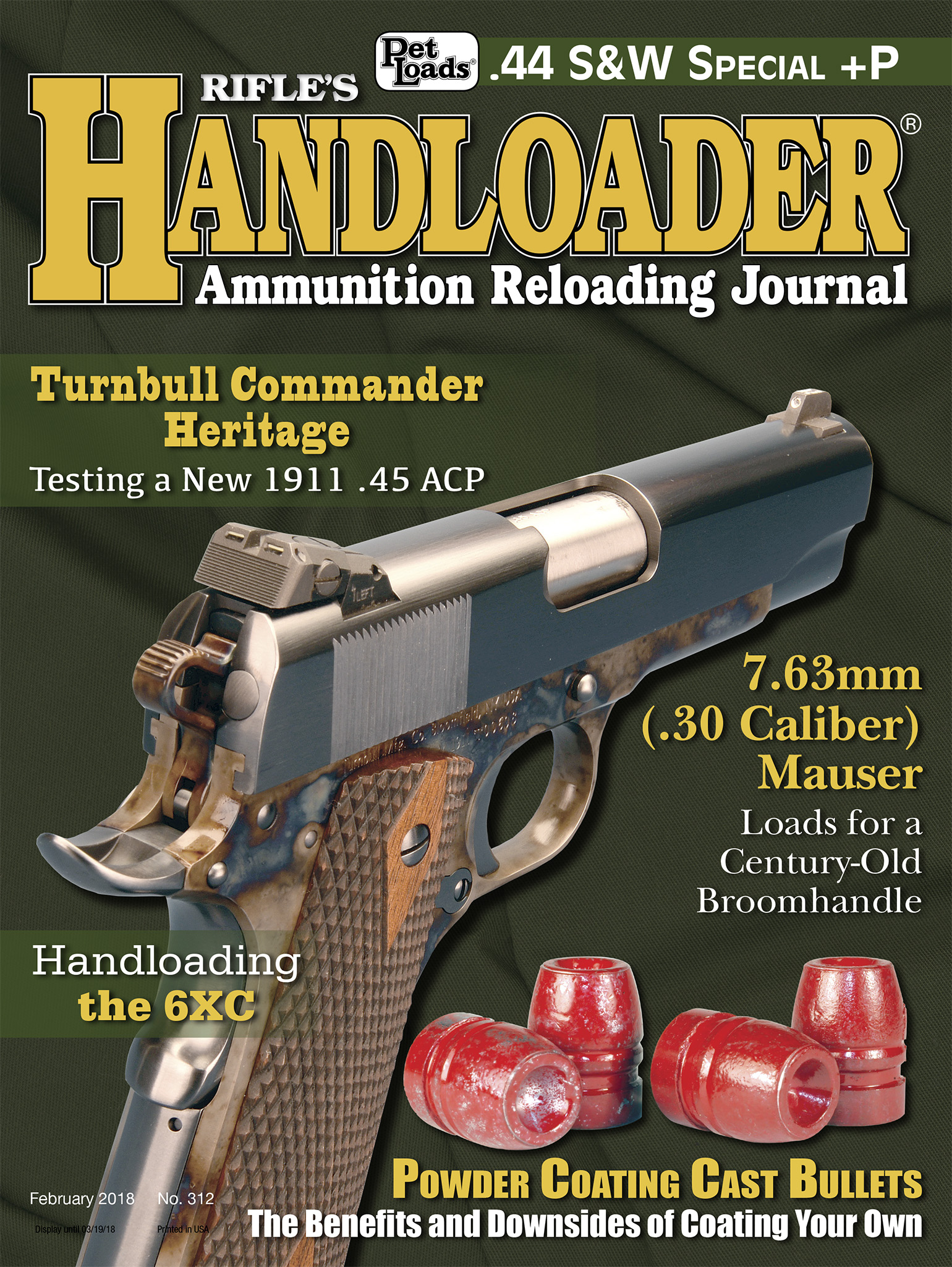Book Reviews
Hornady Handbook of Cartridge Reloading 10th Edition
column By: R.H. VanDenburg, Jr. | February, 18
The Hornady Handbook of Cartridge Reloading, 10th Edition is bigger than the previous edition, with more bullets and powders in its data. Page count has been increased from 924 to 1,012 pages. The text section has increased from 126 to 140 pages. The Bullet section accounts for most of this, with each type of bullet getting a full page complete with a cross-sectioned drawing and thorough explanation – there are 17 different bullet types listed.
This is followed by Reloading Step-by-Step, a comprehensive review of the reloading process. The Tips & Techniques section is much the same as before and well worth rereading. This time, however, the Online Ballistic Calculator subsection has been expanded. If a handloader has any interest in how bullets behave after leaving the muzzle, then read this section. This is

Next is the Hornady Bullet Guide, expanded, of course, by the addition of new bullets. Divided first into rifle then handgun categories, every bullet, by caliber, includes a picture, the factory stock number and name, bullet diameter, weight and sectional density. The ballistic coefficient is given for G1 and sometimes G7 models. A drawing representing shooting applications (target, varmint, deer, elk and Cape buffalo) is followed by muzzle velocity range, which represents the velocity range at which the bullet can be expected to perform as designed.
The heart of the book is the reloading data. Many handloaders, when contemplating the purchase of yet another reloading manual, want to know if the data has been carried over from previous editions or was reshot. In the case of this 10th edition, the answer is yes. An example of the former is the .257 Weatherby Magnum. A fine cartridge, its proprietary nature has limited its availability and its data in this edition is the same as appeared in the 9th.
For the latter, we can turn to the ever-popular .30-06 Springfield and its bullet lineup. In the previous edition there were seven bullet categories; in the 10th there are 13. The list of powders included has changed, frequently showing fewer powders this time, but also several new ones. All data was reshot and the powder charges changed, often upward. If you reload for the .30-06, you’ll want to study this section carefully. The same results carry throughout the book with lots of new data, bullets and powders.
In the Rifle Data section, the cartridge count is down from 166 to 161, with eight cartridges being dropped and three added. Those dropped include the .219 Donaldson Wasp, .219 Zipper, 7x61 Sharpe & Hart and the family of Dakota cartridges: the 7mm, .300, .330, .375 and .416. Added were the 7x64 Brenneke, .280 Remington Ackley Improved and .338 Federal.
The data is arranged as before, with text describing the cartridge, including a dimensional case drawing and specifications including rifle, barrel length and twist, case, primer, bullet diameter, maximum cartridge overall length, maximum case length and case trim length. For each bullet, or group of bullets, the bullet weight or range of bullet weights, sectional density and diameter are listed. Under a picture of each bullet is the name, stock number, cartridge overall length for the bullet and ballistic coefficient, G1 or G7, or both. The data is listed by powder, from fastest to slowest, in representative velocities, usually increments of 100 fps, but sometimes in 50 fps. The appropriate powder charge appears under each velocity heading. The maximum charge is highlighted in red. There are frequent footnotes relative to the ballistic coefficient and directions for creating a custom ballistic table for each bullet, found at www.hornady.com/ballistics.
The Handgun Data section follows the same format. The cartridge count is 70, down from 72.
Throughout the book a number of powders have been dropped to save space, I suspect, but certainly the best-performing powders were kept. New powders such as Alliant’s BE-86, Reloder 23 and 26 have been added, along with IMR-4451 and IMR-7977 and Accurate’s LT-30 and LT-32, among others.
Charts and Conversion Tables include a list of Hornady dies. An illustrated Glossary wraps things up.
Reloading manuals are fascinating and each new release adds to our handloading knowledge. The Hornady Handbook of Cartridge Reloading, 10th Edition adds a lot in terms of bullets, powders and ballistics. Retail cost is about $35. Visit www.hornady.com/shop.


